This Is What It’s Like To Get a Custom-Made, $80,000 Smile
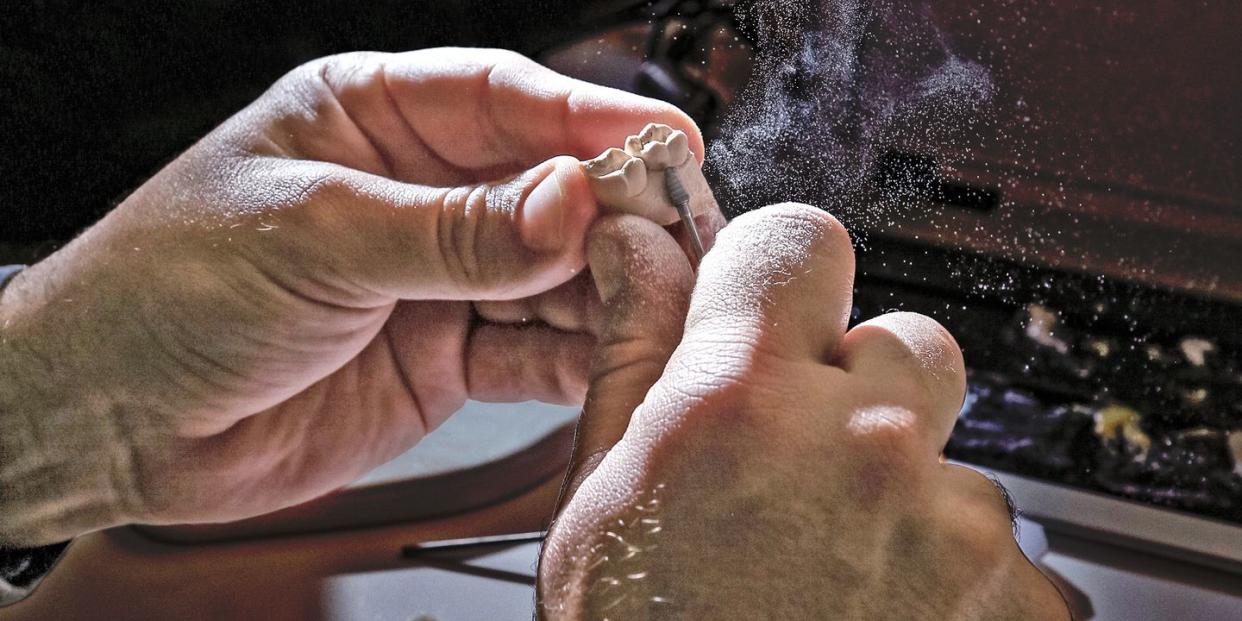
- Oops!Something went wrong.Please try again later.
When I told a friend of mine I was getting veneers, he joked that the only people he knew who had them were “Bravolebrities.” He had a point; it seems like these days, the moment anyone reaches even the lower rungs of fame or amasses even a modest amount of money, their first stop is to get their teeth fixed. The thing is, these people are only embodying something we all know to be true: rich, attractive people have good teeth.
How your teeth look and, to a lesser degree, function has always been tied to class in the United States. And in an increasingly selfie-obsessed society where everyone has the potential to go viral, teeth have become even more of a status symbol (just look up #veneers on Instagram). Why else would home whitening kits fly off the shelves, mail-order aligner businesses disrupt the market, and rappers like Cardi B spit lyrics like “Got a bag and fixed my teeth / hope you hoes know it ain’t cheap?” If good teeth are a sign of status, then veneers are the Dom Perignon of the dental world. And I have been obsessed with them for years.
Dental work for the sake of aesthetics isn’t anything new. Celebrities as far back as the golden age of Hollywood were getting crowns and bonding to make their teeth larger and whiter. The porcelain veneers we know today were invented in the 1980’s and mostly required shaving down your real teeth to be replaced with fake, “perfect” versions - the horsey “chiclets” that we still think of when we hear the word “veneers.” Thankfully, veneer technology has come a long way. Nowadays, they are microscopically thin, customizable, and much more natural-looking - mostly thanks to a new generation of cosmetic dentists, which includes Michael Apa, DDS.
Dr. Apa is responsible for the teeth of some of the most famous people in the world from A-list actors and Middle Eastern royalty to globe-trotting billionaires and, yes, reality TV stars. His personal life—the stuff high-flying, Ferrari-collecting, Cucinelli-wearing dreams are made of—matches the general sheen of his clientele’s. But none of that would matter if he wasn’t incredibly good at his job (if we’ve learned anything from social media, it’s that the lifestyles of the rich and famous-adjacent are often smoke and mirrors). What sets Dr. Apa and his work apart is that his veneers aren’t designed to stand out.
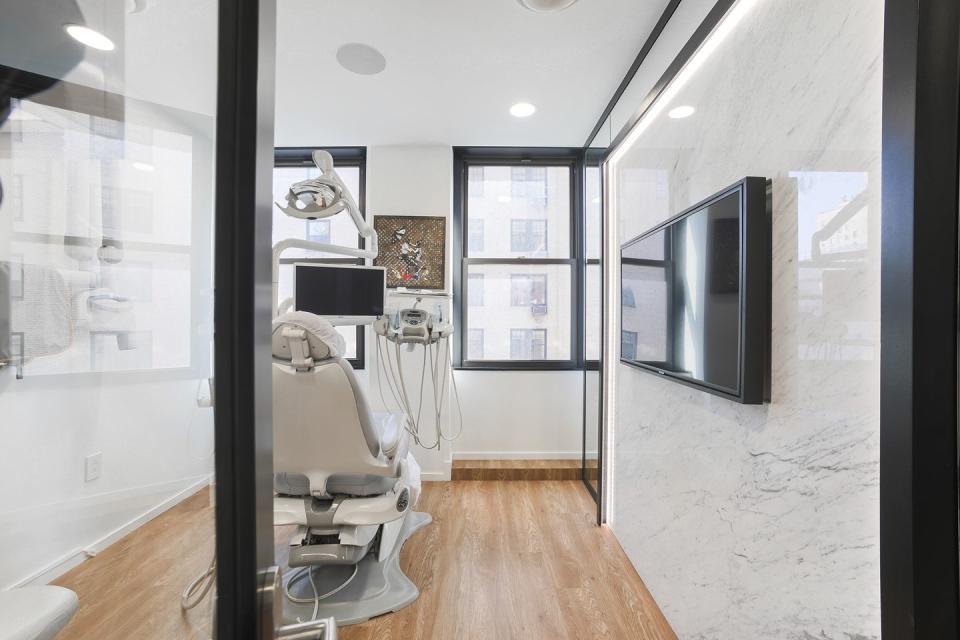
If you went to your regular dentist and asked for veneers, chances are you would essentially get a pre-fab job. You’d pick from a few shade selections and shapes and your new teeth would be manufactured in a factory, then installed in your mouth. Apa teeth, on the other hand, are completely custom made from scratch. Dr. Apa designs them himself, often right in front of the patient, while discussing not just aesthetics, but function as well, like aligning the bite. Then each individual tooth is molded and glazed in his in-office laboratories so he can fine-tune everything down to the most minute detail. The result is a grill that’s so imperceptibly perfect that it looks like you were just born with it, but of course you weren’t. You paid a lot for it—to the tune of around $5,000 per tooth.
The process of getting veneers all starts with an extensive consultation. Sitting down in a chair in Dr. Apa’s pristine white, futuristic office is a bit like getting your teeth examined on the Starship Enterprise—and that’s before they pull out the laser gun. It’s actually a high def camera and running it around and around the inside of my mouth, they were able to immediately create a 3D computerized model of my teeth on screen in front of me. Then there were pictures—a lot of pictures—and a more traditional mold of my mouth taken with that sticky goo (you know the kind). After every millimeter of my mouth was documented, it was time for the main event.
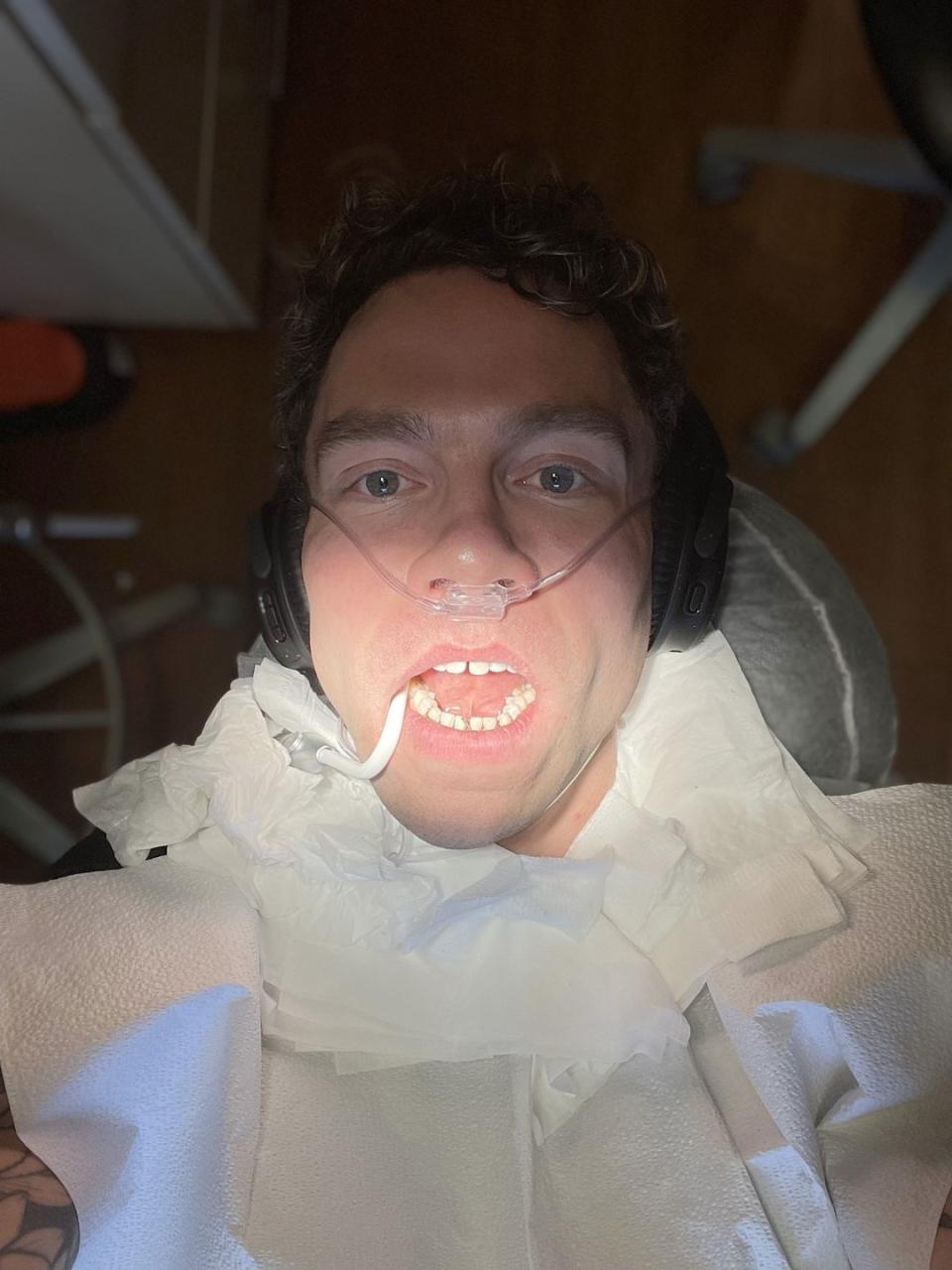
Dr. Apa started by asking me about my history of dental issues and orthodontia, but he didn’t really need to; he could already see my entire life story through my teeth. He could tell I had braces when I was younger, that I had to have my teeth re-straightened a few years ago and that I am an epic teeth grinder. In fact, what surprised me most about the consultation was how little he even talked about aesthetics. The bulk of the conversation was about how my teeth functioned and how he could make them better. He told me that I had worn my back molars almost completely flat through years of grinding (“totally normal for a 36-year-old living in New York City,” he assured me, since stress is a big factor in teeth grinding). I had also ground down the front of my teeth (yikes) and more on my left side, which he could also tell was the side I favor when I chew. That gave my face a lopsided appearance and cheated my chin to the side, something he could fix by re-aligning my bite through veneers, he said. He assured me that not only would that help realign my face now, but it would also help slow the asymmetry that might happen as I get older thanks to bone and volume loss.
Only after all of that did we touch on aesthetics. He told me he didn’t need to do much, just close a slight gap between my front teeth, extend them a bit to make up for the grinding, and “add a little bit of width” to my smile. All in all, my new teeth wouldn’t look drastically different from my natural teeth, just like I won the genetic dental lottery (and never even thought about grinding). Truthfully, I was expecting to need more of an overhaul, but who was I to argue with the expert?
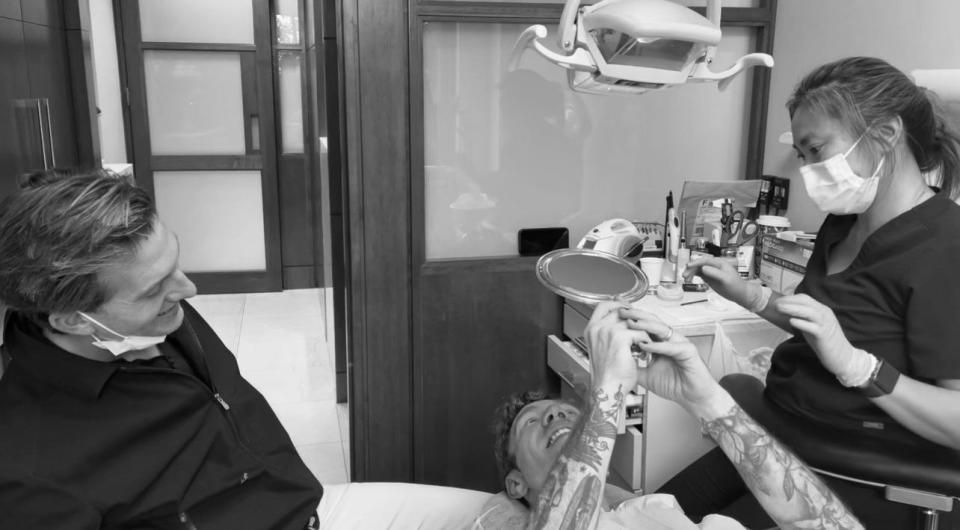
A few weeks later, I was back in the chair, this time to get my temporary veneers put in. The first of four appointments, the installation of the temporaries is possibly the most important. It started with Dr. Apa explaining what he had designed. I was going to get ten veneers on the top and six on the bottom, all of which were slightly longer than my ground-down natural teeth and placed ever so carefully to realign my bite to where it should be. (For those of you keeping track, that’s 16 teeth at $5k a piece for a grand total of $80,000). To be honest, it was hard to really understand what he’d done seeing them on a tray. They looked like fake teeth you’d buy from a Halloween store - connected into one piece that pops into your mouth. The temporaries are made from a composite material and you’re required to wear them for about two weeks to get used to the feeling, to see them in your mouth, and so you can discuss any changes you (or Dr. Apa) would like to make before the actual, permanent veneers are made and installed. It’s like carefully test-driving a car, except that with veneers, if the finished product isn’t perfect, you can’t just return it to the dealership. You basically have to start the process all over. So you’d better be sure they’re exactly what you want.
Once we both signed off on the temporaries, I was hooked up to a low-level of laughing gas to chill out, numbing solution was injected into my gums, and the three hour process of grinding my natural teeth down began. In the old days, they would have filed all my teeth into little nubs. Even though that doesn’t happen anymore, prepping my teeth was still a painstaking process. Yes, there was some grinding to create enough space to pop the temporaries on, but apart from a few larger gaps, there wasn’t much difference in how they looked according to the picture I took halfway through. The most uncomfortable part of the process was sitting in the chair for so long (I made it through three and a half podcast episodes during the whole thing). I did my best to tune out the drilling and grinding noises, and kept my eyes tightly shut, but didn’t feel a thing. When everything stopped, I opened my eyes to an entirely new pair of chompers staring back at me in the mirror.
Since the temporaries were created as one piece, I wasn’t able to floss, but all other tenets of good dental hygiene still applied. I was to apply a gel to my gums regularly throughout the day to help them heal and I was to avoid hard, chewy or crunchy foods that could damage them. Most importantly, I was to wear a new night guard religiously to keep them intact. Even though I did all those things, my temporaries still broke. They’re made from a softer material than actual veneers and after a few days, several of them had broken in various places and I looked like I’d been punched in the mouth. Luckily, I had my second appointment a week after the installation—this time to review the design.
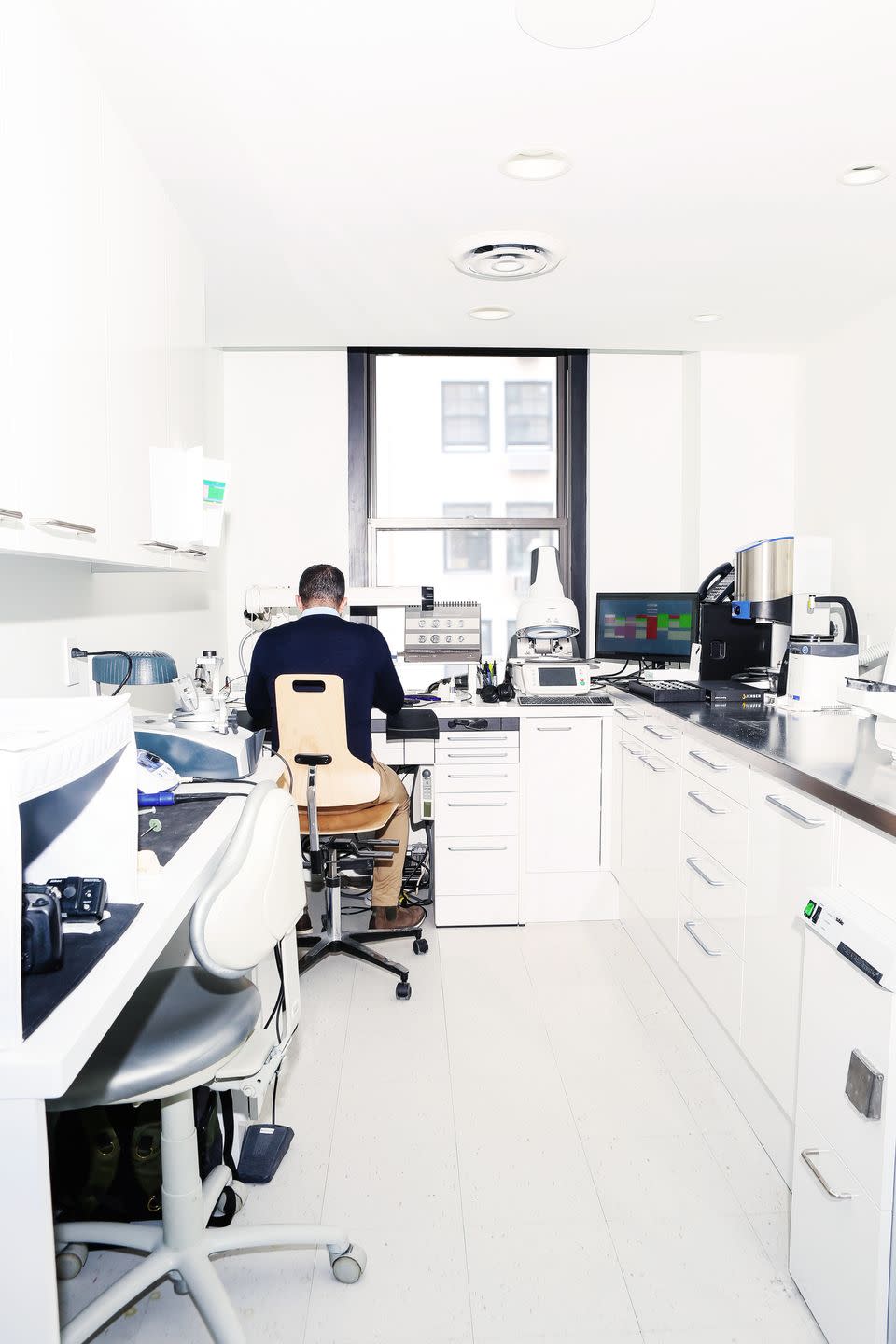
In my review appointment, I got a brand new set of temporaries to replace the ones I had trashed. Those broke off in several places too, so I went back yet another time to have them fixed. I didn’t mind walking around with jagged teeth (no one seemed to notice anyway), but when I told Dr. Apa, he seemed flabbergasted that I hadn’t come in earlier. In one of my review appointments, as well, he showed me the color of my final veneers. Even though I knew the end goal is natural perfection, not blinding white, I asked for them to be a shade whiter. That, after all, was one of the things I was most excited about having veneers - no need to ever whiten my teeth again since porcelain doesn’t stain. He agreed, but advised against going any whiter so they wouldn’t look obviously fake.
Finally, the day arrived. As I walked into Dr. Apa’s office to get my permanent veneers, it didn’t really hit me that I was about to get oral surgery. I’d already been in that office so many times over the last few weeks that it felt just like any other day. In fact, the actual process was almost exactly like getting my temporaries in. After Dr. Apa came in and showed me my finished veneers (beautiful, but, like, teeth), I was hooked up to laughing gas, numbed, and laid back again. This time, the process wasn’t as long since all the drilling and filing was done, but it still took a good two hours. Once it was all done and I was cleaned up, I was handed a mirror to see the result.
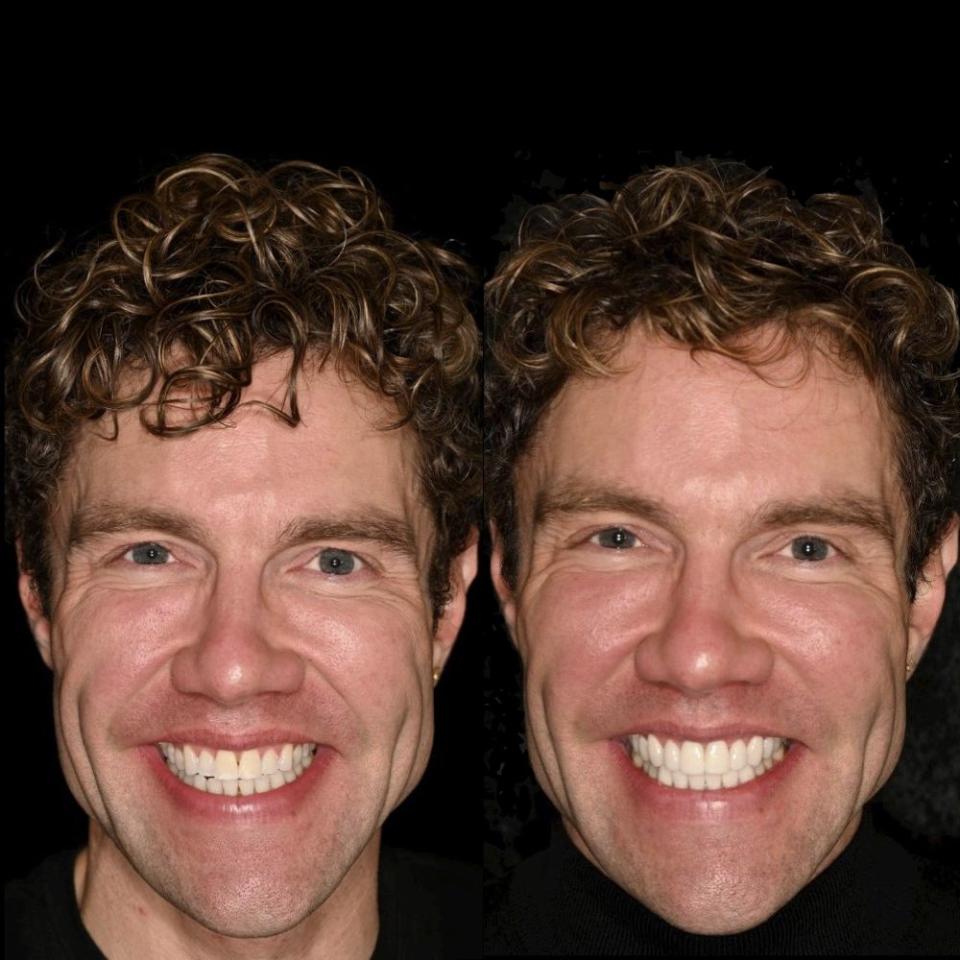
The overall feeling I had was anticlimactic. My new teeth looked amazing, sure, but there wasn’t some sort of incredible reality show reveal with tears or excited screaming. This is normal, according to Dr. Apa. “People don’t understand that your gums, your lips, everything has to go back to normal; the numbing has to wear off and everything has to recalibrate,” he said. It wasn’t until I went in for my final appointment a week later that it all hit me. I was still getting used to the feeling of the new teeth in my mouth and understanding my new bite and how it affected not just how I chewed but how my entire mouth felt in my head. But in my final appointment, after a series of pictures were taken, Dr. Apa showed me a side by side comparison of my before and after shots. With my new veneers, not only did my teeth look a thousand times better, but my lopsided chin was already starting to re-center and the left side of my face was starting to relax. I was amazed at how much the veneers had already made a difference in how my entire face looked.
Dr. Apa told me it would take about six months for everything to truly settle down and for me to see the full effects of my new smile. Unlike my temporaries, there aren’t any restrictions on what I can and cannot eat, but I have noticed that I’m way more careful about what I crunch into. I’ve also completely stopped biting my nails, since he did tell me that was one thing that could damage or chip my teeth. And I have a heavy duty night guard to protect them against grinding which I dutifully wear every night (and sometimes even for naps).
Here I am a few months later and I’m still getting used to how my new teeth feel, but I can’t stop looking at them. Has my face continued to change? Maybe, it’s hard to tell in the mirror. But they still look like new and I haven’t touched a whitening product in months. If anything, my veneers helped me become even more aware of my dental hygiene, not less. I’ve been surprised by how few people actually comment on my new teeth, but maybe that’s the point. Teeth are the ultimate rich person secret—subtle, perfect and shockingly expensive—like a bespoke Tom Ford suit but for your face. Aside from my apartment, my teeth are now the most expensive thing I own and honestly, I can’t think of a better investment.
You Might Also Like

